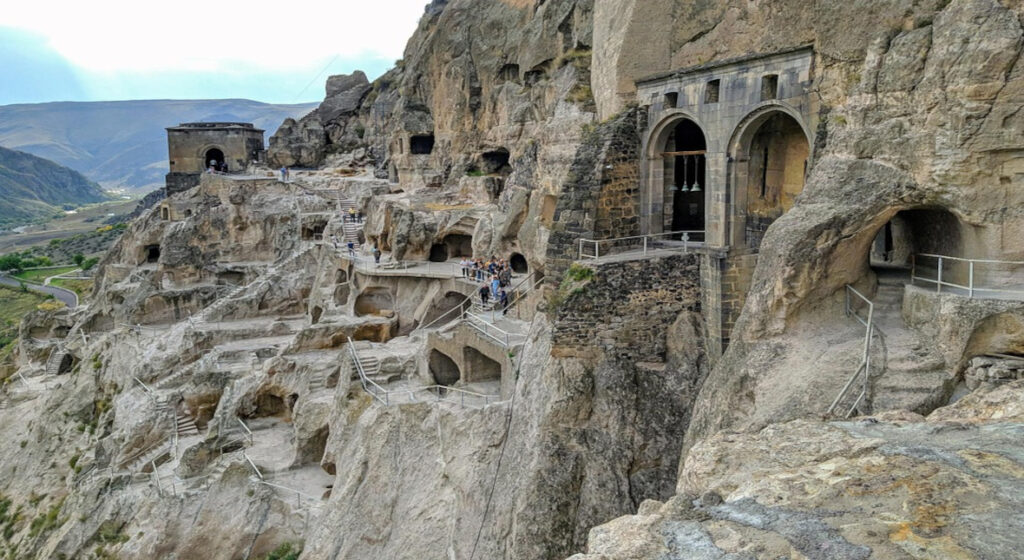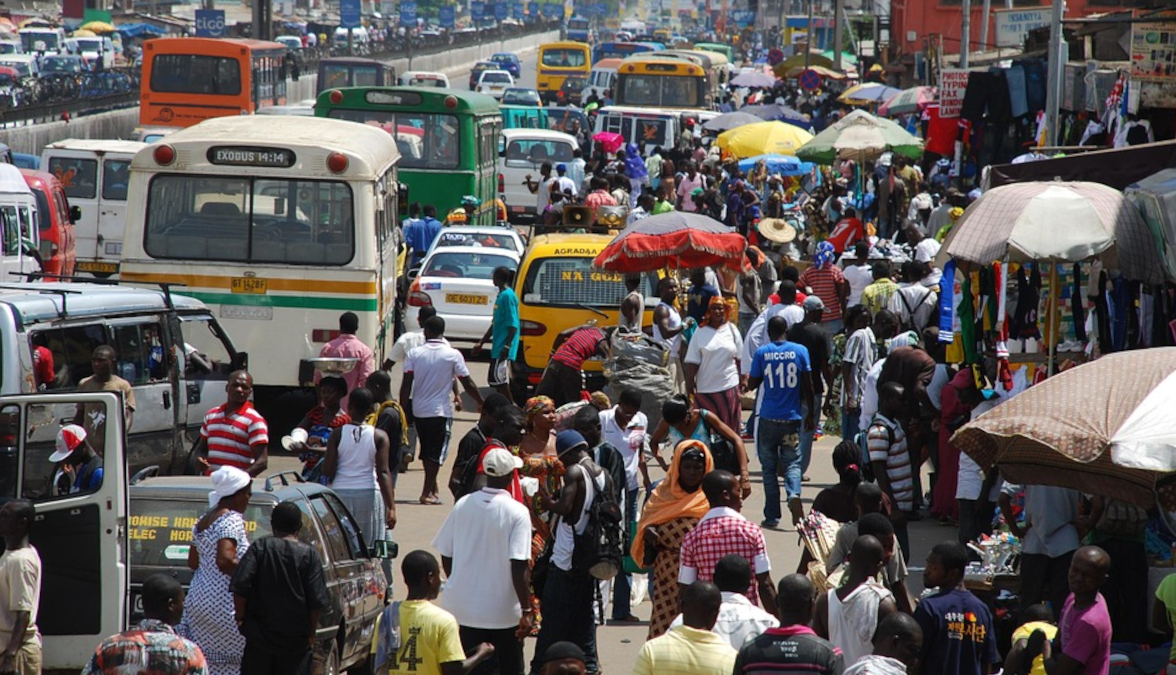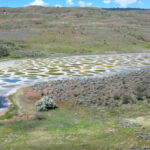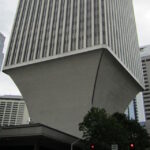Now Reading: 12 Little-Known Events That Shaped the World
-
01
12 Little-Known Events That Shaped the World
12 Little-Known Events That Shaped the World

History is full of significant moments that have shaped our present, yet many of them remain hidden from the mainstream narrative. These lesser-known events, though often overshadowed by larger, more famous occurrences, have had profound and lasting impacts on the course of history. In this post, we’ll uncover ten such events and explore how they shaped the world as we know it today.
The Eruption of Mount Tambora (1815)
Before the Eruption: Tambora, located on the island of Sumbawa in Indonesia, had been quiet for centuries, but it was a massive stratovolcano capable of catastrophic eruptions. Its eruption in April 1815 was the most powerful volcanic eruption in recorded history, with a Volcanic Explosivity Index (VEI) of 7 (on a scale of 0 to 8).
Immediate Consequences: The eruption itself was so violent it killed an estimated 71,000 people through pyroclastic flows, tsunamis, and ash fall.
The Global Impact: The ash and aerosols from the eruption spread through the atmosphere, drastically cooling global temperatures by about 1-2 degrees Celsius. This “volcanic winter” had a far-reaching impact: In North America, it caused crop failures, leading to severe food shortages.
The cooler temperatures, combined with unusual weather patterns, triggered widespread famine in places like India, China, and Europe.
The Cultural Impact: The gloomy and chilly summer of 1816 became famous in literature. Shelley, Byron, and other Romantic poets spent the summer together in Switzerland. Stuck indoors because of the bad weather, they decided to challenge each other to write ghost stories, which led to the creation of Frankenstein by Mary Shelley.
The Cadaver Synod (897 AD)
Pope Stephen VI and His Political Ambitions: Stephen VI was determined to assert his control over the papacy and his political enemies. By putting his predecessor, Pope Formosus, on trial, he was symbolically declaring the invalidity of Formosus’s papacy. Formosus had previously made political alliances that Stephen found unappealing.
The Trial: Formosus had died in 896, so his body was exhumed and dressed in papal garments to “stand trial.” His corpse was propped up in a chair, and a deacon (acting as his representative) answered charges against him.
Accusations: Formosus was accused of perjury, violating canon law, and attempting to make illegal alliances.
The Outcome: Of course, since Formosus was dead, he could not defend himself, and the trial ended with Formosus being “found guilty.” His body was stripped of its papal vestments, three fingers (symbolizing his papal authority) were cut off, and the body was thrown into the Tiber River.
Political Fallout: The Cadaver Synod deepened the political instability of the papacy and contributed to the ongoing “Papacy of the Pornocracy” (a period of scandal, corruption, and manipulation within the church). Pope Stephen VI was eventually imprisoned and strangled to death in 897. The event highlighted the level of chaos in the medieval papacy and served as a cautionary tale about political ambitions.
The Fordlandia Experiment (1928)
Ford’s Vision: Henry Ford, one of the most successful industrialists of the time, wanted to create a self-sustaining community in the Amazon to secure a steady supply of rubber for his automobile tires. He envisioned a model city with modern American standards of living: streets laid out in an organized grid, houses with running water, schools, and even Ford vehicles driving on Ford-paved roads.
Cultural Clash: Ford brought in American engineers and workers, who were unfamiliar with the local climate and culture, while hiring local Brazilians for labor. The locals were not accustomed to Ford’s highly structured, industrialized approach. The workers resisted Ford’s strict rules, which forbade things like gambling, alcohol, and even traditional Brazilian dances.
Environmental Problems: The rubber trees Ford planted were susceptible to diseases like leaf spot, which devastated the crops. Furthermore, the location was far from ideal; the soil, climate, and disease resistance of the rubber trees were not suited to the region.
The Failure: After several years of failure, Ford abandoned the project in the 1940s, losing millions of dollars. The region was left with a ghost town, and Ford’s dream of rubber independence ended in disaster. Today, remnants of the old Fordlandia can still be found in Brazil, and the site has become a symbol of the failure of industrial hubris in the face of nature and culture.
The 1908 Tunguska Explosion
The Event: The explosion, which occurred on June 30, 1908, in a remote part of Siberia near the Tunguska River, released the equivalent energy of between 10-15 megatons of TNT. While there was no direct impact crater (since the object exploded in the air), the explosion caused a shockwave that flattened trees over an area of 2,000 square kilometers.
Theories of What Happened:
Meteorite or Comet Impact: The leading theory is that a stony meteoroid or a fragment of a comet entered the atmosphere and exploded in the air, causing the massive destruction.
UFOs or Secret Weapon Tests: Some conspiracy theorists have speculated that the explosion was caused by extraterrestrial activity or a secret Russian weapon test, though these theories lack scientific backing.
Scientific Impact: The Tunguska event raised awareness about the potential risks of asteroid or comet impacts and led to the establishment of global monitoring systems. It also influenced the development of planetary defense programs.
The New Madrid Earthquakes (1811-1812)
The Earthquakes: These seismic events, which were centered in the New Madrid Seismic Zone (today part of the central United States), were some of the most powerful earthquakes ever recorded in North America. The most significant tremors occurred in December 1811, January 1812, and February 1812.
Shocking Scale: The earthquakes had magnitudes between 7.5 and 8.0, strong enough to cause significant damage and affect areas far beyond the epicenter.
The Mississippi River temporarily reversed its flow in some locations, and massive landslides created new water routes and lakes.
Aftermath: The earthquakes created deep changes in the landscape, and many new geological features were formed, including lakes and changes in river channels. However, because the region was sparsely populated at the time, the death toll was low compared to earthquakes in more densely populated areas.
Long-Term Consequences: Despite the lack of a major loss of life, the event raised awareness of seismic activity in an area not traditionally associated with earthquakes, and it influenced U.S. earthquake preparedness strategies. It also spurred changes in building codes in earthquake-prone areas.
The Pazzi Conspiracy (1478)
Political Context: Florence in the late 1400s was a city-state under the control of the Medici family, who were both wealthy and politically powerful. Lorenzo de’ Medici (Lorenzo the Magnificent) was the leader of the family, and his political opponents sought to overthrow the Medici’s dominance.
The Plot: The Pazzi family, with the backing of Pope Sixtus IV and other discontented nobles, plotted to assassinate Lorenzo and his brother Giuliano during Easter Mass at the Florence Cathedral on April 26, 1478. The idea was to weaken the Medici and seize power for themselves, but the plan was ill-executed.
The Assassination Attempt: On the day of the attack, Lorenzo and Giuliano attended Mass at the cathedral. The Pazzi conspirators, including Francesco de’ Pazzi and others, attacked the brothers. Giuliano was struck down and stabbed to death, but Lorenzo managed to escape with only minor wounds.
Failure: Although the attempt on Lorenzo’s life failed, Giuliano’s death shocked the city. Lorenzo quickly regained control, and the Medici family acted swiftly to quell any further uprisings.
Aftermath and Punishment:
Executions: Lorenzo and his allies ordered the immediate execution of those involved in the conspiracy, including members of the Pazzi family.
Papal Involvement: The Pope’s involvement in the conspiracy led to tensions with the Medici family, who had strong connections with the Vatican. Pope Sixtus IV’s support for the Pazzi family backfired when his own nephew was executed, leading to the excommunication of the Medici family from the Catholic Church.
Consolidation of Power: The conspiracy failed, but it ultimately solidified the Medici family’s rule over Florence, allowing Lorenzo to become an even more powerful and influential figure. His reign is often considered a high point of the Italian Renaissance, marked by patronage of the arts and cultural flourishing.
The War of Jenkins’ Ear (1739-1748)
The Spark: The War of Jenkins’ Ear was named after an incident in 1731, when a British merchant named Robert Jenkins had his ear cut off by a Spanish coast guard officer, allegedly for smuggling. Jenkins reportedly showed his severed ear to the British Parliament in 1738, using it as proof of Spanish mistreatment of British merchants.
Political Context: The war was rooted in ongoing tensions between Britain and Spain over colonial trade rights and naval power. Both countries had conflicting interests in the Caribbean, where trade was booming, and Spanish forces had been harassing British merchants.
The War’s Beginnings:
British Reaction: Jenkins’ ear became a rallying cry for British politicians, who presented the act as a symbol of Spanish aggression. This led Britain to declare war on Spain in 1739.
The Scope of the Conflict: The war was initially fought in the Caribbean and along the American coastline but later merged with the larger War of Austrian Succession (1740-1748). It was fought mostly over trade routes and territorial control, with Britain attempting to assert dominance over Spain’s colonies.
Impact:
Limited Military Action: Despite the name, the war didn’t actually involve much fighting over Jenkins’ ear. It mainly consisted of naval skirmishes, blockades, and raids on Caribbean ports.
Treaty of Aix-la-Chapelle (1748): The war ended inconclusively with the Treaty of Aix-la-Chapelle, and the underlying tensions between Britain and Spain persisted, eventually contributing to the broader conflict of the Seven Years’ War.
Legacy: The War of Jenkins’ Ear is often remembered as a somewhat absurd pretext for war and as an example of how public opinion (and a gruesome tale) can shape international relations.
The London Beer Flood (1814)
The Event: On October 17, 1814, a large vat of beer at the Meux and Company Brewery in London ruptured, causing a massive beer flood. The explosion of the vat released over 323,000 gallons (1.5 million liters) of beer into the streets of the St. Giles district.
The Chaos:
Destruction: The flood of beer smashed through the brewery walls, sending barrels of beer tumbling into the streets. Several houses were destroyed, and the streets were flooded with beer up to a height of 15 feet (4.5 meters).
Fatalities: Tragically, the beer flood killed at least eight people, most of whom were caught in the flood as they tried to escape or were in nearby buildings. One victim was reportedly swept away by the torrent of beer and drowned.
The Aftermath:
Public Reaction: The event shocked Londoners and became a subject of humor and disbelief. It was reported in newspapers, where some speculated about the effects of the beer on the unfortunate victims.
Regulatory Changes: The flood highlighted the dangers of poorly constructed industrial sites, leading to improvements in brewery safety regulations.
A Tale of Irony: Beer, which had traditionally been seen as a popular and safe beverage (given the unsanitary nature of water sources), became the unlikely cause of disaster.
The Great Emu War (1932)
The Situation: During the Great Depression, farmers in Western Australia were struggling to grow crops due to poor economic conditions. In addition, thousands of emus, large flightless birds, descended on the wheat-producing regions, destroying crops and making life even harder for the farmers.
The Military Response:
Government Involvement: In response, the Australian government sent soldiers armed with machine guns to cull the emu population. Between November and December 1932, the soldiers tried to shoot the emus, but the birds proved to be remarkably elusive.
The Emus’ Victory: The soldiers found it difficult to target the fast-moving birds, and despite being armed with machine guns, they failed to make a significant dent in the emu population. The emus would often scatter, and only a few birds were killed each time.
The End of the War: By December, the military withdrew, and the emus had effectively “won” the war. The government had to come up with alternative methods to deal with the emu problem, such as offering bounties for emu kills and using fences.
The Legacy: The Emu War remains a humorous, somewhat absurd episode in Australian history, showing the difficulty of controlling nature, even with modern weaponry.
The 1518 Dancing Plague
The Event: In July 1518, residents of Strasbourg (then part of the Holy Roman Empire) began to dance uncontrollably in the streets. The dancing went on for days, with dozens of people joining in. Some reportedly danced until they collapsed, and several even died from exhaustion or heart attacks.
Theories:
Ergot Poisoning: One popular theory suggests that the dancers were suffering from ergot poisoning, a hallucinogenic fungus that grows on rye. Ergot poisoning can cause convulsions, hallucinations, and uncontrollable movements.
Mass Hysteria: Another theory proposes that it was a case of mass hysteria, where social and psychological pressures caused people to experience uncontrollable dancing. The stress of living in harsh times, coupled with religious fervor, may have contributed to this phenomenon.
The Response:
Authorities, confused by the bizarre behavior, believed the only way to cure the dancers was to allow them to dance more, so they built a stage and hired musicians to encourage more dancing.
Ultimately, the dancing subsided, but no one was able to explain the cause definitively. Some accounts suggest that the authorities may have resorted to treating it as a religious or supernatural event.
The Battle of Talas (751)
This battle between the Abbasid Caliphate and the Tang Dynasty of China had a profound influence on the spread of culture and technology. The defeat of the Tang dynasty stopped China from advancing westward and paved the way for the transmission of papermaking technology from China to the Islamic world, which then spread to Europe.
The Sinking of the SS Eastland (1915)
The SS Eastland was a passenger ship that capsized in the Chicago River, killing over 800 people. This disaster led to reforms in maritime safety standards, contributing to stricter regulations regarding ship stability and passenger safety, which have had long-lasting effects on the global shipping industry.
Conclusion: From shifting geopolitical boundaries to sparking major social movements, the ripple effects of these events continue to shape our societies today. By understanding their impact, we gain a deeper appreciation for how even the most obscure moments can alter the course of history.





























